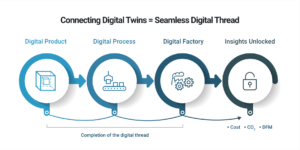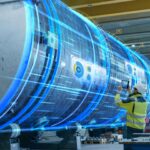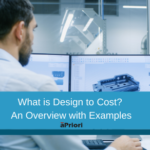
Key Takeaways:
- Digital twins can unlock performance and profits in smart manufacturing systems
- Smart factories can meet manufacturability, cost, and sustainability goals while providing the visibility to address risk proactively
The Full Article:
The global smart manufacturing market reached nearly $250 billion in 2021 and is anticipated to exceed $650 billion by 2029, according to Statista. The smart manufacturing term covers technologies that streamline production and help to improve performance (and profitability) and range from data analytics to forecast demand to robotics that accelerate production.
A recent survey of 1,350 manufacturers revealed that 97% intend to leverage “smart” technology in their processes. However, almost two times as many respondents said they lacked the technology to outpace the competition, compared to last year’s survey. And more than two-thirds of manufacturers believe technology can be very /extremely helpful in addressing workforce challenges.
Though manufacturers know that digital adoption is important, concerns abound regarding cost, complexity, training, and potential delays. To address these risks, successful smart manufacturing strategies are incorporating digital twins to get more value from the product lifecycle. Not only can companies augment existing capabilities, but they also can delve deeper to gain further data and insights across all product development departments.
Leverage Smart Manufacturing via Digital Twins to Get More Value
Manufacturers are using multiple types of digital twins to simulate and optimize product designs, manufacturing processes, and specific factory capabilities.
The digital product twin is a 3D CAD model or virtual representation of a physical product to optimize design via simulation/modifications. The digital process twin determines the most effective product manufacturing method. Companies simulate manufacturing processes using the digital twin to identify the most appropriate production process for cost, sustainability, and manufacturability.
The digital factory twin, or smart factory, is a virtual model of the physical factory with factory-specific production capabilities and detailed costs – including labor, electricity, materials, and overhead rates. A digital thread links insights from existing systems (e.g., CAD, PLM) and multiple digital twins to address business goals holistically such as profitability, manufacturability, and sustainability.

Digital Twins Drive aPriori Customers’ Innovation and Profitability
Let’s explore the benefits of a smart factory in creating a more agile, innovative, competitive, and profitable organization for the long term:
- Gain early insights with design simulation. The digital product twin allows design engineers to identify design issues in the early stages. It enables them to put the design through several iterations via simulation to test and analyze it for performance and optimization before sending it to physical production. As a result, physical prototypes and engineering change orders (ECOs) are reduced and a better design is determined. The product can move quickly to production while meeting cost and manufacturability goals. Manufacturers can innovate faster and more frequently, accelerate time to market, and improve the bottom line.
Discover how Carrier saved millions with aPriori’s digital product twin.
- Increase supply chain resilience. Today’s manufacturers must pivot frequently – whether it is a pandemic, inflation, or geopolitical issues. The smart factory can minimize disruptions and enable manufacturers to optimize opportunities. Advanced technologies allow them to run what-if scenarios, simulate options, streamline workflows and processes, remove bottlenecks, break down siloes, and reduce production cycle times in an efficient, cost-effective manner. All improve profitability and provide more time and capital for further innovations.
Learn how AGCO used aPriori’s digital process twin to gain manufacturability and cost insights.
- Measure and meet sustainability goals. Greater operational efficiencies mean less material waste and lower energy usage. Through simulation, manufacturers can identify carbon-heavy processes (i.e.-longer cycle times, greater material waste when tooling, etc.) and explore more sustainable and cost-effective alternatives. Digital twins provide critical support since products and facilities can be created and tested virtually before commencing the physical manufacturing stage. aPriori can quickly and easily calculate the CO2e emissions of a new or updated product design, providing fact-based insights and details into energy usage and material waste that are inaccessible to most manufacturers. It allows manufacturers to make better, more informed decisions about where the tradeoff should be made between carbon and cost.
- Improve supplier relations. Lower carrying costs are an integral part of boosting profitability. The smart factory can play a key role in supply chain management. Manufacturers can get real-time visibility into their supply chains and logistics. Tools such as the Regional Data Libraries can provide insight into quoting logistics, calculate and compare the cost of materials, and ensure more profitable, fact-based supplier negotiations.
Discover how Alstom reduced supplier costs by 40% using aPriori.
- Simplify collaboration. aPriori helps to remove the departmental siloes that can cause delays and prevent teams from accessing essential data, or using corporate expertise effectively. Cross-functional teams can use aPriori’s co-working application to assign tasks, use 3D CAD models to tag and respond to comments, and manage requests and assignments easily.
See how CNH realized $312,000 in annual savings in the first two months of working with aPriori.
Smart Factories: A Manufacturer’s Greatest Partner
Smart factories, and in particular the digital twins, are fertile ground for product development lifecycle optimization. Manufacturers can create a better product, more cost-effectively. As a result, they can get to market faster and accelerate profitability.
Smart manufacturing solutions like aPriori confirm these benefits. Recently, Forrester interviewed four individual aPriori customers. The results were astounding. Based on a three-year
Increase Product Manufacturability, Profitability, and Sustainability.
Discover why the digital factory is a manufacturer’s greatest ally





